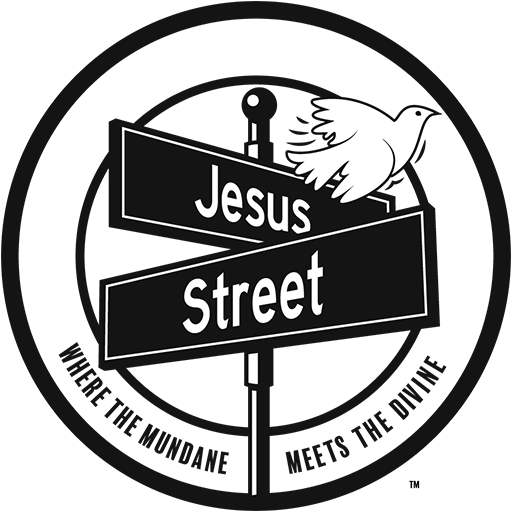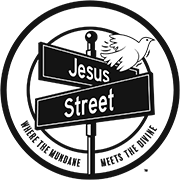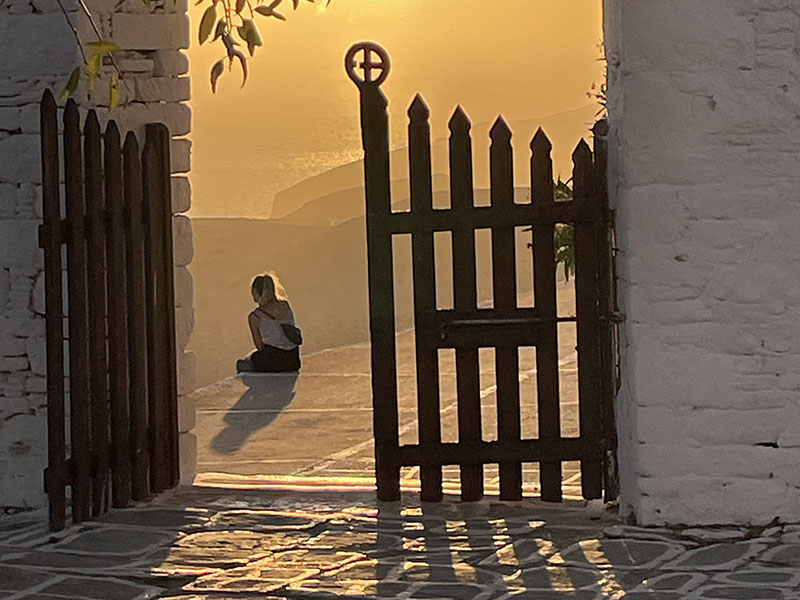Peering into the Deep Takes Patience
MOAB, UTAH — We were on the fringe of civilization, so I wanted to take the opportunity to peer into the mystery of space.
Sam, Benton, and I were spending a few days in Moab, touring the stunning desert parks of southeastern Utah. After a hot day spent hiking, we returned to Arches National Park around 9 p.m., slowly driving up a paved ledge to reach the plateau of expansive desert and rock pillars.
By now the crowds had vanished, and the spacious quiet of this remote, wild place wrapped its comforting presence around me like a cloak.
Just hours earlier, this stretch of blacktop had been packed with dusty cars, camper vans, and busses as tourists gawked at thousands of red sandstone arches, windows, and weirdly statuesque formations known poetically as hoodoos, goblins, or fairy chimneys. During the day, the hoodoos looked friendly and humorous. Early adventurers played the game of naming them for the twist of their shape, such as the Tower of Babel, the Three Gossips, or the Fiery Furnace.
Yet after the fall of darkness, the hoodoos felt eerie; was it my imagination or did the red stone goblins retreat liked nocturnal predators, hiding to await their hapless prey?
As we rolled along that night, a mere sliver of a moon hung low in the sky. The park felt virtually empty of humanity, and we kept driving farther into its lonely and unfamiliar territory to escape the light pollution of Moab. The remote feeling made me question. Was this safe? Would some madman or frenzied animal jump out and attack us?
The darkness was as thick as a fog. There were no street lights, only the headlights of our rented Audi, the twin beams valiantly exposing the yellow line painted down the center of the road.
As we rounded a curve, suddenly a hulking presence appeared on our right. I scanned my eyes over the scene to take in what was happening. The Tower of Babel loomed over us, as bulky as the Lincoln Memorial. Cloaked by the draperies of the night desert, the rock formation materialized as if out of nowhere. Almost immediately, the road looped around the hoodoo, avoiding a collision, and we happily sped away from the mammoth outcropping.
What else is out here that I am not seeing?
I felt keenly aware of my dearth of experience exploring in the dark. I was still in my car, but I was skirting the perimeter of my comfort zone. Yet I kept going. How far would be far enough to optimize the star gazing? After about 20 minutes, I pulled over at a parking lot near a popular trailhead. During the day, this place had been packed with walkers coming and going. Now it offered us blessed solitude.
At last, the heavens awaited! I felt my heart beat quicken in expectation as I exited the driver’s door.
Then Benton informed us that it would take 30 minutes before our eyes would fully adjust to the darkness. This summer, he is working in the Geology Department at the University of Utah, which includes time camping in the desert while doing field work. One hight, Benton woke up in his open tent, looked up, and saw the stunning array of .God’s handiwork glittering overhead. His eyes had been unable to perceive the vastness of the scene before falling asleep.
While I trusted him, my brain resisted the idea of having to wait, thinking: now that we are finally out here in the dark, dark desert, it can’t possibly take half an hour to see the show.
I was too wise to speak my impatient thoughts aloud. With a few groans, Sam and I stretched ourselves out on the black asphalt, which had been baking in the sun all day. Immediately we felt its warm, radiant heat on the back of our arms and legs. As a nice contrast, a slight chill tickled the exposed side of my body when a cooling breeze scurried over us. At last. I felt perfectly relaxed, melting into the ground beneath me while staring up into the cosmos.
“There’s the Big Dipper,” Sam said, pointing overhead to his left.
“Sure enough.” A cluster of twinkling blue stars formed the familiar ladle.
But this sighting of the Big Dipper didn’t seem any brighter than usual. To be honest, the entire sky dome looked flat and one dimensional. What was all this hype about stars in the desert? Why didn’t this sky look like the awesome photographs that I had seen?
Of course! Benton was right. Accepting this fact, I breathed deeply and surrendered into 30 minutes of silent stillness. This work is very familiar to me, as 30 minutes is my standard allotment of time spent every morning in meditation/contemplative prayer. The practice is simple, yet profound.
You sit.
You focus on your love for God.
You seek His presence.
You release any thoughts which nag for your attention. You content yourself with simply breathing, observing the gift of present moment, and sitting at His holy feet.
Sometimes, you receive encouraging words or comfort. Sometimes, you receive clarity or a vision. More often, you simply receive rest and reassurance. When the gong on my timer sounds to signal the session’s end, I am changed. My restless feelings are gone. My needs are filled. I am at peace, ready to meet whatever the day may bring.
You might say, it takes 30 minutes for my spiritual eyes to adjust. The glare of civilization and brashness of contemporary culture have temporarily disabled my ability to see clearly and deeply. But God rewards those who devotedly seek Him, whether in a posture of contemplative prayer or in one of reverent star gazing.
As the minutes passed in the park, I began to notice the little things. The wind ceased. An insect or small animal rustled in the grass. A distant car drove past on the main road and disappeared again into the night. A soothing stillness set in. Sam began to snore from his spot on the pavement beside me. And, as I kept gazing overhead, the night sky revealed more and more of her beauty.
What had seemed barren now was pregnant with vivid points of light. The white, lacy arms of the Milky Way showed up, enabling my depth perception. Rather than staring at a flat canvas, I felt I was looking into a deep box. A myriad of shining lights hung here and there as if on invisible strings, some appearing close, others seeming impossibly far away.  Why, countless stars and planets were floating above, specks of blue, silver, or deep purple, spread out in an endless and ever expanding dance of joy.
Why, countless stars and planets were floating above, specks of blue, silver, or deep purple, spread out in an endless and ever expanding dance of joy.
I wanted to fall asleep out there, flat on my back, in hopes of experiencing a moment such as Benton had described. How much more might I see, after an hour or two of sleep? Perhaps I would see a shooting star. Or hear the melodies of Heavenly angel choirs. But a car pulled up into our parking lot, its headlights slicing through the lovely folds of darkness like the rays of an alien’s laser weapon. Sam stirred and woke up.
“It’s time to go,” he muttered. “It’s getting late. We need to go back to the hotel.” To my distress, Benton agreed.
I rubbed my eyes, ruminating on how the approach of a car could feel so unnatural and invasive. I did not want to leave, but I forced myself to think of my family members. We returned to our vehicle, I started it up, and silently we began the 20 minute ride back toward the park entrance/exit kiosk. It was right to take my sleepy husband and son back to their beds, yet I felt dissatisfied. Just when I had finally begun to really see, I had to leave. Then I remembered — there was one more opportunity, and I would seize it.
As we drove around The Tower of Babel, I stuck my head out of the window, savored the rush of cool air on my face, and threw my head back. I looked up expectantly. The boxy burst of the rectangular form reminded me of the ruin of a Greek temple, outlined in shadows. With a little imagination, I conquered up an image I had seen of a Temple of Zeus in the wilds of Greece, the strong columns stretching toward the sky, where a riot of starry host blazed in spirals overhead. Since ancient times, man has yearned for God and sought to find Him. I was reminded of the hoodoo’s alternate name, the Pipe Organ.
In my mind’s eye, I attempted to capture the worshipful picture. Perhaps one day while I am sitting in meditation, my memory will take me back to that glimpse of God’s spectacular creation.







